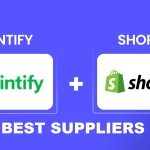Hey foodie friend! 👋 Did you know your blog could earn more than just likes and shares? By partnering with the best affiliate programs for food bloggers, you can turn your passion for food into a steady income stream.
Whether you’re sharing kitchen gadgets, pantry staples, or meal kits, these programs let you monetize your influence effortlessly. Ready to cook up some extra cash?
Honestly, I know exactly how overwhelming it can feel when you’re first diving into the world of affiliate marketing – but I promise it’s not as complicated as making the perfect soufflé!
Today, I’m super excited to share everything I’ve learned about the most profitable, beginner-friendly and the best affiliate programs for food bloggers.
Whether you’re just starting or you’re a seasoned blogger looking to diversify your income streams, this guide is going to be your secret sauce to success.
Why Food Bloggers Should Care About Affiliate Marketing
Before we dive into the specific programs, let me share a quick story. Last year, I was making around $500 monthly from ad revenue when I decided to get serious about affiliate marketing.
Within six months, I had tripled my monthly income – and the best part? Most of it was passive income from products I genuinely love and use in my kitchen every day.
The beauty of affiliate marketing for food bloggers is that it’s:
- Completely natural to incorporate into your existing content
- Helps your readers find quality products you trust
- Creates passive income while you sleep
- Builds stronger relationships with brands you love
Find the Best Affiliate Programs for Lifestyle Bloggers in 2025
Best Affiliate Programs for Food Bloggers
1. Amazon Associates
Let’s start with the elephant in the room – Amazon’s affiliate program. While the commission rates aren’t the highest (typically 3-5% for kitchen products), the sheer variety of products and user trust makes it worthwhile.

What I Love About It:
- Easy to get started
- Huge product selection
- 24-hour cookie window for all products
- People trust Amazon
- Great for kitchen gadgets and cookbooks
Commission Rate: 3-5% for kitchen and dining products
Cookie Duration: 24 hours
Payment Threshold: $10
Pro Tip: Don’t just link to random products. Create detailed product comparisons and honest reviews of kitchen tools you actually use. My Instant Pot review post alone generates $200-300 monthly in affiliate income!
2. Sur La Table Affiliate Program
This is one of my personal favorites for recommending high-quality kitchen equipment and cookware.

What I Love About It:
- Higher commission rates than Amazon
- Quality products that food enthusiasts trust
- Regular promotional offers
- Excellent customer service
Commission Rate: 5-8% Cookie Duration: 30 days Payment Threshold: $50
3. Thrive Market Affiliate Program
Perfect for bloggers focusing on healthy, organic, or specialty ingredients.

What I Love About It:
- High conversion rates
- Strong commission structure
- Appeals to health-conscious audiences
- Regular promotional offers
Commission Rate: $25 per new member + 25% revenue share on first order
Cookie Duration: 30 days
Payment Threshold: $100
4. Food Blogger Pro Affiliate Program
This one’s especially great if you create content about food blogging itself.

What I Love About It:
- High commission rate
- Long cookie duration
- Perfect for tutorial content
- Trusted platform in the food blogging community
Commission Rate: 40% Cookie Duration: 60 days Payment Threshold: $50
5. MasterClass Affiliate Program
Great for promoting cooking classes from celebrity chefs.

What I Love About It:
- High-quality content
- Strong brand recognition
- Good commission rates
- Regular promotional offers
Commission Rate: $15 per sale Cookie Duration: 30 days Payment Threshold: $50
Top Affiliate Networks for Food Bloggers
1. ShareASale: Food Blogger’s Affiliate Marketing Goldmine
If you’re a food blogger looking to monetize your content, ShareASale is a must-join affiliate network. Known for its extensive range of food-related merchants and kitchen brands, this platform offers something for every niche—whether you’re sharing gourmet recipes, meal prep tips, or kitchen gadget reviews.

With over 4,900 merchants, ShareASale is a treasure trove of opportunities for food bloggers ready to turn their passion into profit.
Notable Programs to Explore
Here are some standout affiliate programs on ShareASale that align perfectly with food bloggers:
- Chicago Steak Company
- Perfect for bloggers who focus on grilling, BBQ, or meat-based recipes.
- Offers high-quality, premium steaks and meats that appeal to foodies and home chefs.
- Commissions are competitive, making it a lucrative choice for recipe creators.
- Wild Alaskan Company
- Ideal for health-conscious bloggers or those promoting sustainable seafood.
- Delivers wild-caught, flash-frozen seafood directly to consumers.
- A great fit for bloggers who create seafood recipes or advocate for eco-friendly eating.
- HelloFresh
- One of the most popular meal kit services worldwide.
- Perfect for bloggers who share quick, easy, or family-friendly recipes.
- Offers recurring commissions, which means you earn every time a subscriber renews their plan.
- Vitamix
- A top choice for bloggers who focus on kitchen tools, smoothies, or meal prep.
- Known for its high-performance blenders, Vitamix is a trusted brand among home cooks and professionals alike.
- Higher-ticket items mean bigger payouts per sale.
What I Love About ShareASale
As a food blogger myself, here’s why I think ShareASale stands out:
Wide Variety of Merchants: Whether you’re into gourmet foods, kitchen gadgets, or meal kits, ShareASale has something for everyone. This diversity allows you to tailor your affiliate promotions to your audience’s interests.
Reliable Payment System: ShareASale pays on time, every time. Payments are made via check, direct deposit, or Payoneer, giving you flexibility.
Great Tracking and Reporting: The platform provides detailed analytics, so you can track clicks, conversions, and earnings with ease. This data is invaluable for optimizing your affiliate strategy.
Easy-to-Use Interface: Even if you’re new to affiliate marketing, ShareASale’s intuitive dashboard makes it simple to find and join programs, generate links, and monitor performance.
Pro Tips for Maximizing Your Earnings on ShareASale
Match Merchants to Your Niche: Promote products that align with your content. For example, if you specialize in smoothie recipes, Vitamix is a natural fit.
Leverage Seasonal Trends: Promote meal kits like HelloFresh during busy holiday seasons or Chicago Steak Company for summer grilling content.
Use Eye-Catching Calls-to-Action: Incorporate affiliate links naturally into your recipes or blog posts. For example, “Make this recipe even easier with a Vitamix blender!”
Track and Optimize: Use ShareASale’s reporting tools to identify which programs perform best and double down on them.
Why ShareASale is a Top Choice for Food Bloggers
ShareASale isn’t just an affiliate network—it’s a powerful tool for food bloggers to monetize their expertise. With its diverse merchant base, user-friendly platform, and reliable payouts, it’s no wonder why so many bloggers swear by it. Whether you’re just starting out or looking to scale your affiliate income, ShareASale is a platform you can’t afford to overlook.
By joining ShareASale and strategically promoting its food-related programs, you’re not just earning commissions—you’re adding value to your audience by recommending products you genuinely love. Ready to get started? Sign up for ShareASale today and start turning your food blog into a revenue-generating powerhouse! 🍴💰
Find the Best Affiliate Programs and Brands for Beauty Bloggers
2. CJ Affiliate (Commission Junction)
When it comes to affiliate marketing, CJ Affiliate (formerly Commission Junction) is a heavyweight in the industry. As one of the largest and most reputable affiliate networks, it’s a go-to platform for food bloggers who want to partner with premium food and kitchen brands.
Whether you’re sharing gourmet recipes, kitchen hacks, or meal prep ideas, CJ Affiliate offers a wealth of high-quality programs that align perfectly with your niche.
Notable Programs to Explore
Here are some standout affiliate programs on CJ Affiliate that are a perfect match for food bloggers:
- Williams-Sonoma
- A household name in the culinary world, Williams-Sonoma offers everything from high-end cookware to specialty foods.
- Ideal for bloggers who focus on gourmet cooking, baking, or kitchen organization.
- Their premium products often come with higher commission rates, making this a lucrative partnership.
- Harry & David
- Known for their gourmet gift baskets, Harry & David is a great fit for bloggers who create content around holidays, special occasions, or gift guides.
- Their seasonal offerings, like fruit baskets and wine pairings, can align perfectly with festive content.
- Vitamix
- A favorite among food bloggers, Vitamix offers high-performance blenders that are perfect for smoothies, soups, and more.
- Promoting Vitamix is a win-win—it’s a trusted brand with a loyal customer base, and its higher price point means bigger commissions for you.
- Blue Apron
- One of the most popular meal kit services, Blue Apron is a fantastic choice for bloggers who share quick, easy, or family-friendly recipes.
- With recurring commissions, you can earn every time a subscriber renews their plan, creating a steady stream of passive income.
What I Love About CJ Affiliate
As a food blogger, here’s why I think CJ Affiliate is a top-tier choice:
Professional Platform: CJ Affiliate is known for its polished, user-friendly interface. It’s easy to navigate, even for beginners, and offers a seamless experience from sign-up to payout.
High-Paying Merchants: The network is home to premium brands that offer competitive commission rates. This means more earnings for every sale or lead you generate.
Detailed Analytics: CJ Affiliate provides robust reporting tools, allowing you to track clicks, conversions, and earnings in real-time. This data is invaluable for optimizing your campaigns and maximizing your ROI.
Regular Payment Schedule: With reliable payouts via direct deposit or check, you can count on CJ Affiliate to deliver your earnings on time.
Pro Tips for Maximizing Your Earnings on CJ Affiliate
Focus on Premium Brands: Promote high-ticket items like Vitamix blenders or Williams-Sonoma cookware to boost your earnings per sale.
Create Seasonal Content: Leverage holidays and special occasions to promote brands like Harry & David. Think Valentine’s Day gift guides or Christmas recipe roundups.
Use Data to Your Advantage: Dive into CJ Affiliate’s analytics to identify which programs perform best for your audience. Double down on what works and tweak underperforming campaigns.
Build Trust with Your Audience: Only promote products you genuinely love and use. Authenticity goes a long way in building trust and driving conversions.
Why CJ Affiliate is a Game-Changer for Food Bloggers
CJ Affiliate isn’t just another affiliate network—it’s a gateway to premium partnerships that can take your food blog to the next level. With its impressive roster of high-paying merchants, detailed analytics, and reliable payouts, it’s a platform that delivers both credibility and profitability.
By joining CJ Affiliate and strategically promoting its food and kitchen programs, you’re not just earning commissions—you’re enhancing your blog’s value by recommending products that align with your audience’s needs and interests.
Ready to elevate your affiliate game? Sign up for CJ Affiliate today and start unlocking the potential of premium partnerships!
Best Practices for Food Blog Affiliate Marketing
After years of trial and error, here are my top tips for success:
- Create Product Roundups Instead of just dropping random affiliate links, create helpful roundups like “Essential Tools for Sourdough Baking” or “Best Stand Mixers for Home Bakers.”
- Write Detailed Reviews My most successful affiliate content includes in-depth reviews with pros, cons, and real-life usage examples. People appreciate honest, detailed feedback!
- Add Links Naturally to Recipes Include affiliate links to recommended tools and ingredients within your recipes, but don’t go overboard.
- Disclose Everything Always be transparent about affiliate relationships. I’ve found that honesty actually increases trust and conversions!
Recommended Tools for Affiliate Marketing Success
Thirsty Affiliates
- Cleanly format affiliate links
- Link cloaking
- Track click statistics
- Manage all links in one place

AAWP (Amazon Affiliate WordPress Plugin)
- Create beautiful product boxes
- Auto-update prices
- Import product information
Geniuslink
- Geotarget affiliate links
- Optimize for international readers
- Track click performance
MonsterInsights
- Track affiliate link clicks
- Monitor user behavior
- Optimize content based on data
Common Mistakes to Avoid
Promoting Everything: Don’t fall into the trap of promoting every product under the sun. Focus on items you genuinely use and love.
Neglecting Disclosure: Always follow FTC guidelines and disclose your affiliate relationships clearly.
Forgetting to Track: Use proper tracking tools to monitor which links and content perform best.
Ignoring SEO: Remember to optimize your affiliate content for search engines to ensure steady traffic.
Wrapping Up
Starting with affiliate marketing might seem daunting, but it’s absolutely worth the effort. Remember, I went from zero affiliate income to making it a significant part of my monthly revenue – and you can too! Start with one or two programs, focus on creating helpful content, and build from there.
Remember, the key to successful affiliate marketing isn’t just about promoting products – it’s about helping your readers make informed decisions about products that will genuinely improve their cooking journey.
Note
Want more tips on monetizing your food blog? Don’t forget to subscribe to our newsletter for regular updates and insider tips on making the most of your culinary content!
FAQs
1. What are affiliate programs, and how do they work for food bloggers?
Affiliate programs allow food bloggers to earn a commission by promoting products, services, or brands on their blogs. When a reader clicks on an affiliate link and makes a purchase, the blogger receives a percentage of the sale.
These programs are typically free to join, and they provide bloggers with the opportunity to monetize their content while recommending products they genuinely believe in.
2. What are the best affiliate networks for food bloggers?
Some of the top affiliate networks for food bloggers include:
- Amazon Associates: A vast range of kitchen tools, cookbooks, and ingredients.
- ShareASale: Offers a variety of food-related brands like organic snacks, cookware, and meal delivery services.
- CJ Affiliate: Features top brands in food and beverages, including gourmet products, food subscription boxes, and kitchen appliances.
- Rakuten Marketing: Known for partnering with big-name brands in the food industry, from cooking supplies to specialty foods.
- Impact: Offers food bloggers access to a wide selection of brands in food delivery, meal planning, and kitchen essentials.
3. How do I choose the right affiliate programs for my food blog?
When selecting affiliate programs, consider:
- Relevance: Choose programs that align with your blog’s niche (e.g., healthy eating, vegan recipes, gourmet cooking).
- Quality of Products: Only promote high-quality products you trust and would personally recommend to your audience.
- Commission Structure: Check the commission rates and payment terms to ensure they align with your income goals.
- Audience Fit: Consider your audience’s preferences and needs. Products that appeal directly to your readers’ lifestyle or cooking habits will perform better.
4. How do I integrate affiliate links without being overly promotional?
To maintain authenticity, integrate affiliate links naturally into your content by:
- Incorporating product recommendations within recipe posts, reviews, or how-to guides.
- Using contextual links (e.g., “I use this blender for making smoothies” with an affiliate link to the blender).
- Creating in-depth reviews or comparison posts that help your audience make informed decisions.
- Building trust with your readers by only recommending products you genuinely love and use.
5. Can I use affiliate links in my social media posts and emails?
Yes, you can promote affiliate links on social media platforms like Instagram, Pinterest, Facebook, and in email newsletters. However, always disclose your affiliate relationship (e.g., #ad or #affiliate) to maintain transparency with your audience and comply with legal regulations.
6. How do I track affiliate sales and commissions?
Most affiliate programs provide a dashboard to track clicks, sales, and commissions. For example:
- Amazon Associates has a detailed reports section to monitor your earnings and the performance of individual links.
- ShareASale and CJ Affiliate offer real-time tracking of clicks, conversions, and payments.
- Some food bloggers use third-party tools like ThirstyAffiliates to better manage and track their affiliate links across multiple platforms.

7. What types of food-related products are popular in affiliate marketing?
Popular affiliate products for food bloggers include:
- Cookware and kitchen gadgets (e.g., blenders, air fryers, pots, and pans).
- Specialty ingredients and food items (e.g., organic spices, artisanal chocolates, gluten-free or vegan products).
- Meal delivery kits (e.g., HelloFresh, Blue Apron, Green Chef).
- Cookbooks and online cooking courses.
- Subscription boxes for snacks, beverages, or gourmet foods.
8. How much can food bloggers earn from affiliate marketing?
Affiliate earnings can vary widely based on traffic volume, niche focus, and audience engagement. Some food bloggers make a few hundred dollars per month, while others can earn thousands, particularly if they promote high-ticket items like cookware or exclusive food products.
The key is to consistently produce valuable content and strategically incorporate affiliate links.
9. Is there a difference between a one-time commission and recurring commission models?
Yes, many affiliate programs offer either a one-time commission (paid only after a sale is made) or a recurring commission (paid each time a customer renews a subscription or makes repeat purchases).
For food bloggers, recurring commission models from services like meal delivery subscriptions or online cooking courses can provide steady, long-term income.
10. What are some common mistakes to avoid in affiliate marketing for food bloggers?
- Overloading content with affiliate links: Too many affiliate links can overwhelm readers and diminish trust.
- Promoting products you don’t use or believe in: Always ensure you’re recommending products you genuinely endorse, as authenticity is key to building long-term relationships with your audience.
- Neglecting proper disclosure: Failure to disclose affiliate links can lead to legal issues and erode trust with your readers.
- Ignoring SEO and content strategy: Simply placing affiliate links won’t guarantee success. Create quality content that is SEO-optimized and engages your audience.
11. How can I stay compliant with affiliate marketing regulations?
- Disclose your affiliate relationships clearly, in both written content and social media posts, using hashtags like #ad, #sponsored, or #affiliate.
- Follow FTC guidelines by ensuring full transparency about your affiliate relationships and avoiding misleading claims about products.
- Respect platform-specific rules (e.g., Instagram or YouTube have specific policies for affiliate marketing).
12. Can I scale affiliate marketing to a full-time income as a food blogger?
Yes, many successful food bloggers scale affiliate marketing to a full-time income by diversifying their income streams. This can include joining multiple affiliate programs, creating in-depth content that attracts more traffic, and building an email list.
While it may take time to see significant income, food bloggers who are strategic and patient can certainly build a profitable affiliate marketing business.








